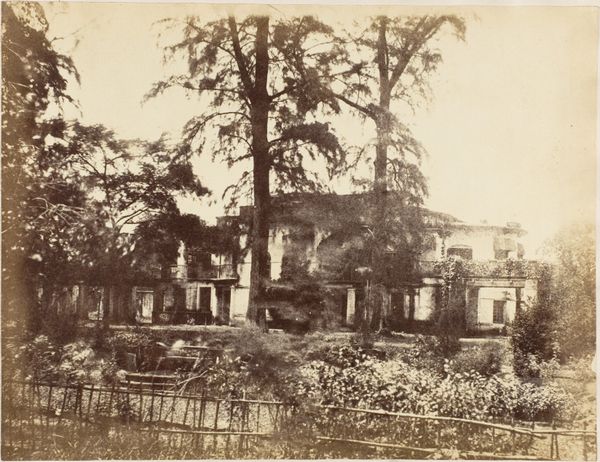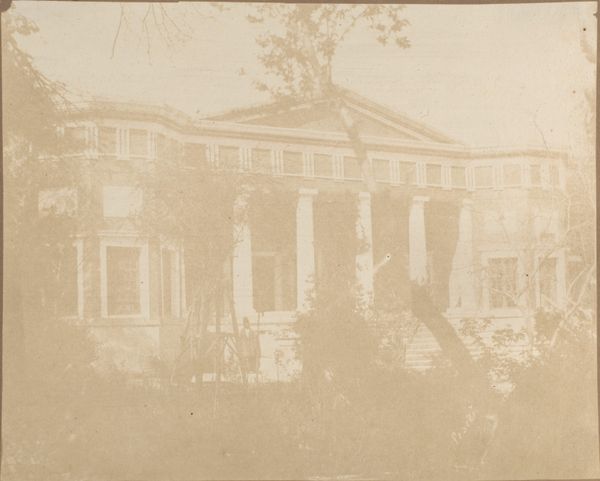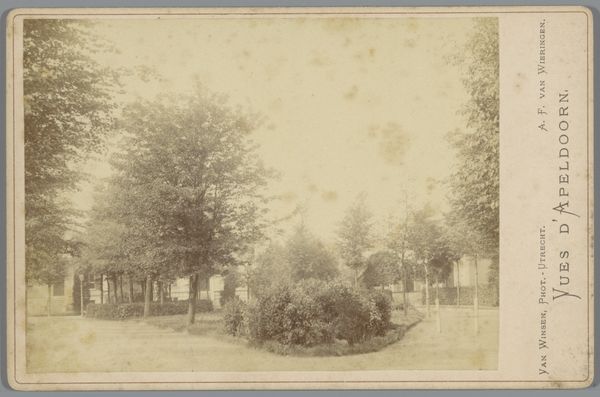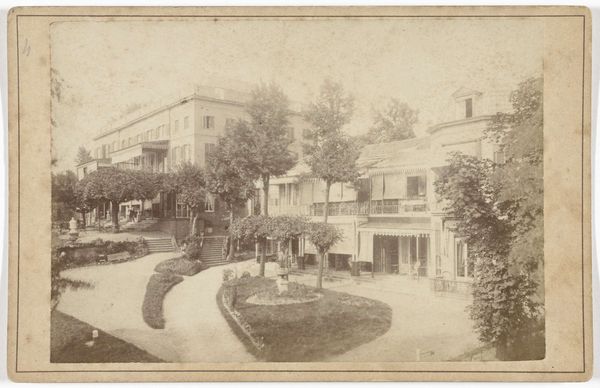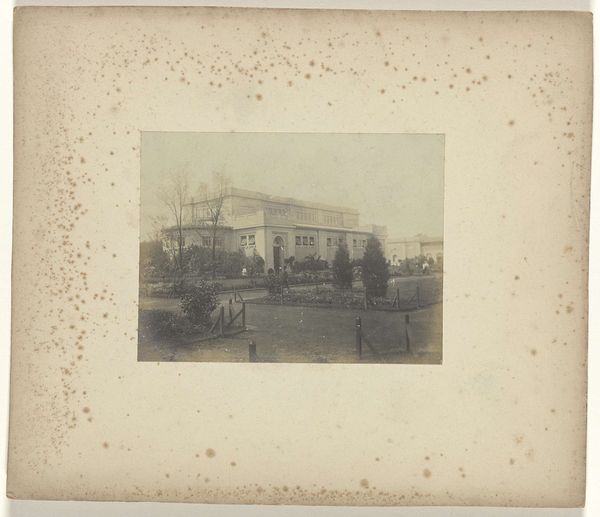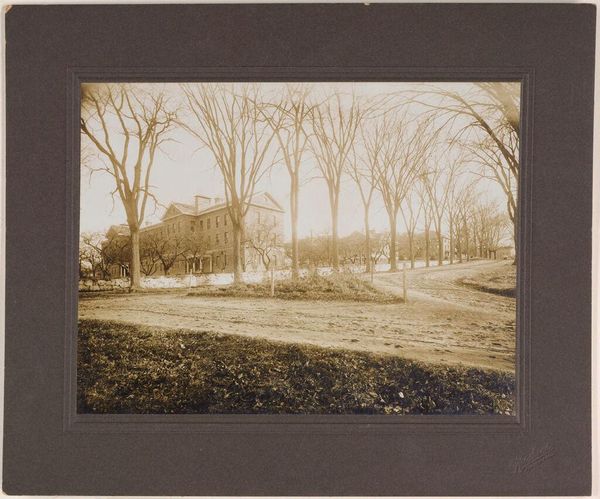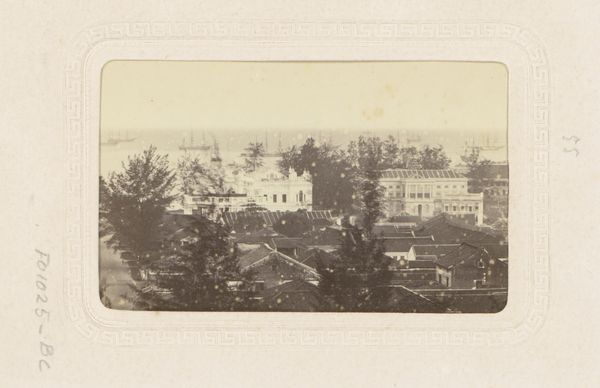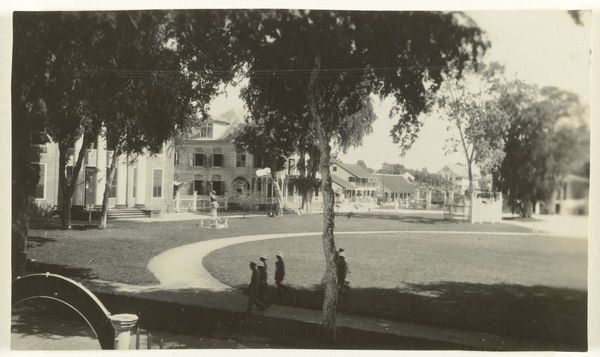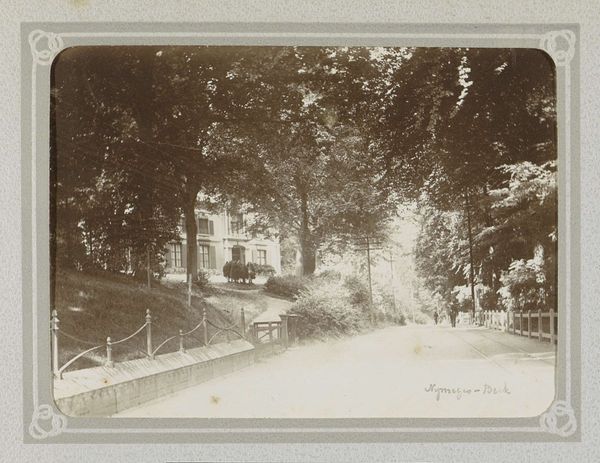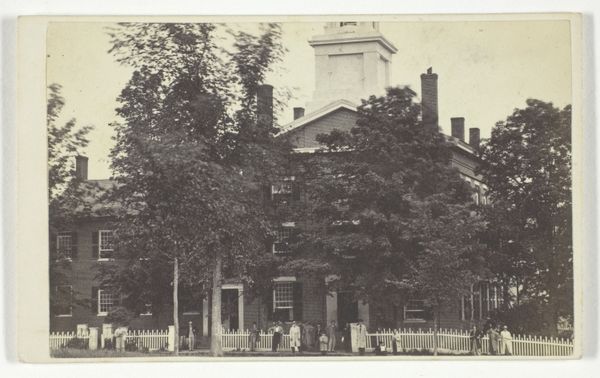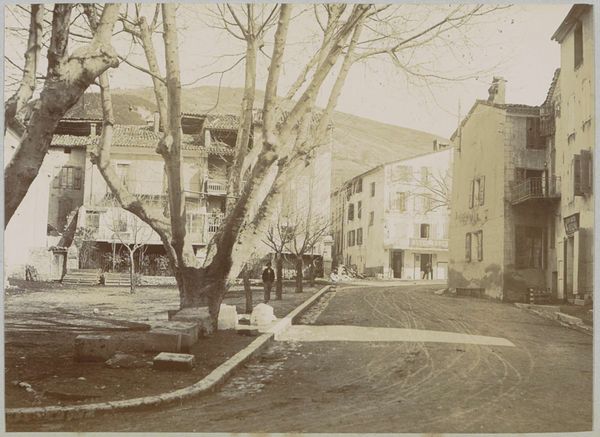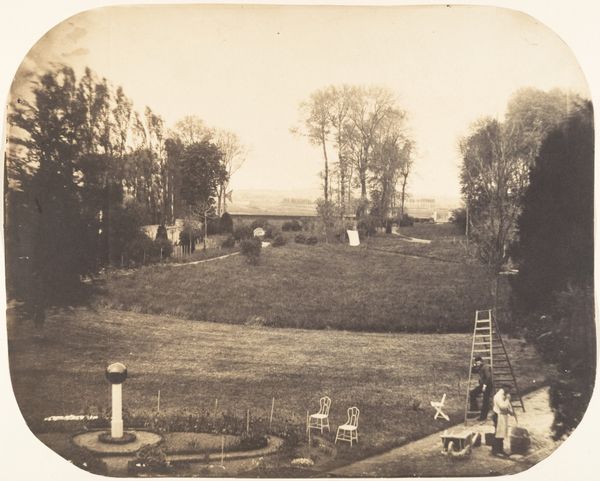
photography, albumen-print
#
landscape
#
photography
#
19th century
#
albumen-print
#
realism
Dimensions: height 100 mm, width 151 mm, height 107 mm, width 165 mm
Copyright: Rijks Museum: Open Domain
Curator: Welcome! Today, we'll explore an albumen print simply titled "Huis Bronbeek bij Arnhem." This 19th-century photograph, dated between 1860 and 1890, is attributed to J.S.J. de Jongh and presents us with a detailed view of a building and its surrounding landscape. Editor: It has a stately, almost melancholic presence, don't you think? The crisp architectural lines of the building contrast so starkly with the blurred foliage and the cold metallic feel from the chained fence... It's an ordered beauty but restrained in a way that creates a somewhat mournful mood. Curator: I agree about its aesthetic appeal but let's delve a bit deeper. "Huis Bronbeek" holds a specific historical significance. In the 19th century, it served as a refuge for KNIL soldiers, colonial veterans of the Dutch East Indies. This photo is, in some ways, a document of that social landscape, highlighting the lives of individuals involved in complex colonial histories. Editor: Absolutely, context is critical. While it might seem like a simple landscape, the knowledge of Bronbeek’s function complicates our reading. Who are these veterans? What traumas did they bring? Is this manicured garden a space of solace or a gilded cage? Considering these perspectives challenges our romanticization of the image. Curator: And photography itself, as a medium at this time, reinforces the notion of Realism as a style...it's striving to document what it actually sees... So, in effect, the photograph also serves as a piece of propaganda about the virtue and comfort of colonial exploits and, perhaps more tellingly, retirement. Editor: Yes, there's such a push and pull, between a seeming record of an architectural landmark and an index of the legacy of colonialism, right? How the colonial power sought to portray their benevolence—a staged narrative that often overshadows the harsher realities of those who experienced the consequences. It really shows that every landscape can hold a contested history. Curator: Precisely. Viewing through that critical lens of both comfort and contention, one finds within this singular image a host of socio-historical dimensions worth investigating, don't you think? Editor: Most definitely. A beautiful, mournful landscape that is simultaneously disquieting, demanding we question what isn't visible at first glance.
Comments
No comments
Be the first to comment and join the conversation on the ultimate creative platform.
